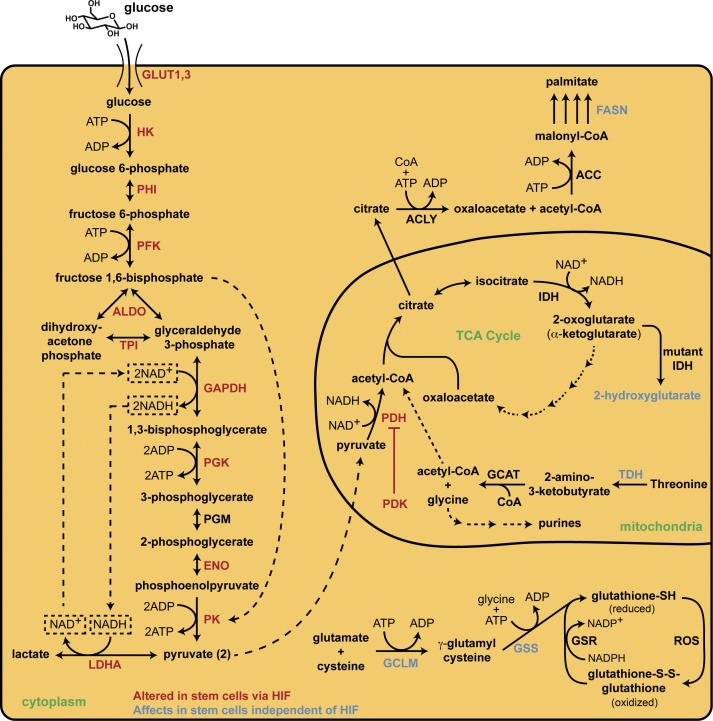Figure 2.
Metabolic pathways that regulate stem cell homeostasis. HSCs use anaerobic glycolysis (left side of figure) to produce a net of 2 ATP for each glucose molecule consumed, and this metabolic adaptation is accomplished via HIF protein regulation of glycolytic genes. Specifically, HIF controls the expression of PDK, which inhibits the activity of PDH and impedes flux through the TCA cycle, promoting glycolysis. Furthermore, glycolysis is sustained through the increased activity of pyruvate kinase (PK) and lactate dehydrogenase A (LDHA) to generate ATP and NAD+, which is required for the GAPDH reaction to maintain glycolytic flux. Glutathione is the main antioxidant in all cells and the enzymes controlling its synthesis, GCLM and GSS, are elevated in stem cells to prevent oxidative stress, which promotes loss of quiescence. Threonine is metabolized by TDH in the mitochondria to produce acetyl-CoA, which enters the TCA cycle, and glycine, which is a building block for purine biosynthesis; this enzyme is elevated dramatically in stem cells. 2-hydroxyglutarate is an oncometabolite produced by mutant IDH enzymes that inhibits histone demethylases, causing a block in stem cell differentiation. Lastly, in neural stem cells, fatty acid synthase (FASN) is required for lipogenesis and its deletion leads to impaired neurogenesis. Collectively, this illustration demonstrates that maintaining stem cell homeostasis is a complex process and that several metabolic pathways, functioning in both a coordinated and independent manner, contribute to quiescence.

